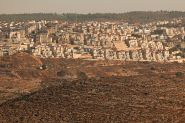
Christmas in South Lebanon: Villages Orphaned of Their Youth
Katia Kahil 11:30

Katia Kahil 11:30

This is Beirut 20/12 15:55

Bassam Abou Zeid 18/12 17:40

This is Beirut 18/12 17:10

This is Beirut 18/12 16:45

This is Beirut 13:16

This is Beirut 12:40

This is Beirut 20/12 20:10

This is Beirut 20/12 20:10

This is Beirut 20/12 14:32
Rayan Chami 20/12 00:18
Liliane Mokbel 17/12 13:00
Hala Abdallah 16/12 17:25
This is Beirut 15/12 20:30

Eleonore Stephan for Huna Lubnan 09:05

This is Beirut 20/12 18:05

This is Beirut 20/12 16:05

This is Beirut 20/12 14:25

Antoine Saade 20/12 12:00

David Sahyoun 17/12 18:00

This is Beirut 17/12 14:15

This is Beirut 17/12 10:30

This is Beirut 15/12 12:25

This is Beirut 15/12 09:05

Makram Haddad 19/12 08:40

Makram Haddad 18/12 08:50

Makram Haddad 17/12 11:30

Makram Haddad 16/12 09:30

Makram Haddad 12/12 11:10

Bélinda Ibrahim 17/12 11:00

Makram Haddad 17/12 08:50

Bélinda Ibrahim 11/12 10:30

Bélinda Ibrahim 10/12 12:00

Bélinda Ibrahim 04/12 15:05